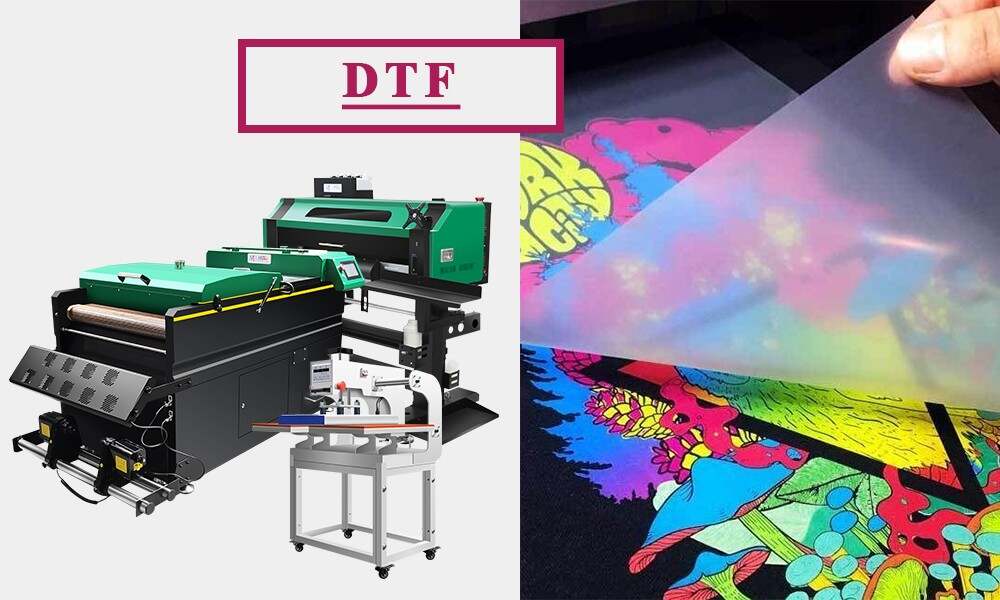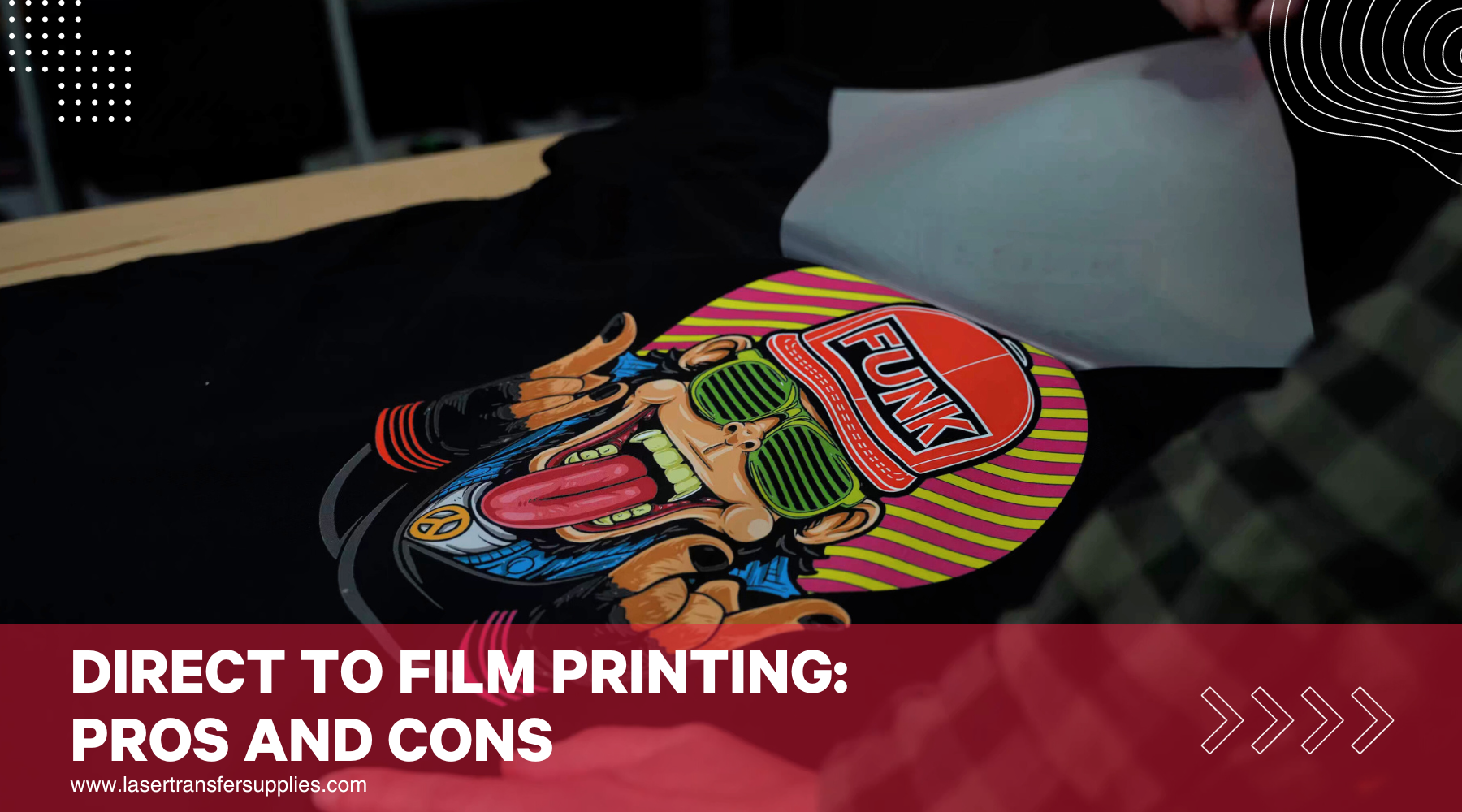The Future of Fashion: Checking Out DTF Printing Technology in the Fabric Industry
Recently, the textile market has actually experienced a significant change in the direction of innovative modern technologies that are reshaping the landscape of style manufacturing. Among these innovations, Direct to Movie (DTF) printing technology has arised as a promising competitor, offering special capacities and opportunities for developers and manufacturers alike. This advanced printing approach has stimulated passion due to its prospective to reinvent traditional textile printing processes. As we look into the implications and possibilities of DTF modern technology in the world of fashion, it becomes obvious that its assimilation can redefine industry standards and pave the method for a brand-new period of creative expression and efficiency.
Development of Textile Printing
Throughout history, the evolution of textile printing has been a testimony to the cutting-edge innovations in this detailed art kind. From the old people utilizing methods like block printing to the digital change these days, textile printing has continually pressed borders. The beginnings of textile printing can be traced back to China around 220 ADVERTISEMENT, with making use of wooden blocks to print on silk textiles. As the craft infect various other parts of the globe, brand-new techniques such as screen printing and roller printing arised throughout the Industrial Revolution, revolutionizing the fabric market - DTF Printing.
In the 20th century, improvements in technology brought about the growth of rotating display printing, permitting faster and more intricate styles. The introduction of electronic textile printing in the late 20th century marked a significant change towards even more versatile and lasting printing methods. Today, with technologies like Direct-to-Fabric (DTF) printing technology, developers can create lively, detailed prints with higher efficiency and minimized ecological impact. The advancement of textile printing showcases a rich background of creativity, ingenuity, and technical progress in the world of fashion and design.
Benefits of DTF Innovation
With the development of fabric printing strategies from ancient methods like block printing to contemporary advancements such as electronic printing, the intro of Direct-to-Fabric (DTF) technology has considerably improved the performance and sustainability of fabric printing procedures. Among the key advantages of DTF technology is its ability to directly print designs onto fabric without the need for transfer papers, which decreases waste and simplifies the manufacturing procedure. In addition, DTF printing permits for better shade vibrancy and information accuracy compared to conventional techniques, allowing textile producers to create top notch and complex styles effortlessly.
Additionally, DTF innovation is understood for its flexibility, as it can be used on various kinds of textiles, consisting of natural fibers like cotton, wool, and silk, along with artificial materials such as polyester and nylon (DTF Printing). This flexibility opens a variety of possibilities for designers and manufacturers to try out different textures and materials, causing even more special and cutting-edge items in the garment industry. In general, the execution of DTF modern technology stands for a significant advancement in fabric printing, providing many benefits that contribute to the future sustainability and creative thinking of the sector
Sustainability in Fashion Production
Stressing eco-friendly practices is extremely important in contemporary style production, aligning with the expanding consumer need for lasting items. In recent times, the fashion business has actually dealt with boosting analysis due to its significant environmental influence, including excessive water usage, chemical air pollution, and fabric waste. As a response, many style brands are currently including sustainable practices into their manufacturing processes to minimize harm to the atmosphere.
Sustainability in fashion manufacturing includes various elements, such as utilizing recycled and natural products, minimizing power intake, implementing ethical labor techniques, and promoting openness throughout the supply chain. In addition, advancements in technology, like DTF printing, deal possibilities to better enhance sustainability in textile production. This technology enables accurate printing on textiles, lowering ink wastefulness and water usage compared to conventional printing approaches.
Style Freedom and Customization

Additionally, DTF printing promotes modification on a range formerly unattainable, enabling for customized garments and unique pieces tailored to specific preferences. Overall, DTF printing modern technology reinvents the style landscape in the fabric sector, offering endless possibilities for imaginative expression and tailored style.
Influence on Supply Chain & Market Trends
DTF printing innovation in the fabric sector is improving supply chain dynamics and influencing market trends via its effectiveness and modification abilities. By enabling on-demand printing and removing the requirement for huge stocks, DTF innovation enhances the supply chain process.
Furthermore, the modification capacity of DTF printing technology is changing the market trends in the textile market. Customers significantly seek one-of-a-kind and customized products, and DTF enables brand names to supply custom layouts cost-effectively. This modification capability not just enhances consumer satisfaction yet likewise opens up new chances for organizations to provide to niche markets and differentiate themselves from competitors. As a result, DTF modern technology is driving a change in the direction of even more customer-centric and cutting-edge methods within the textile sector, forming the future of fashion.

Final Thought
Finally, DTF printing innovation is changing the fabric market by supplying various benefits such as style modification, sustainability, and liberty. This innovative innovation is improving the future of style production, affecting supply this post chains, and driving market trends in the direction of extra reliable and green techniques. As the industry continues to advance, DTF printing will play an important role fit the method textiles are created and eaten in the years ahead.
From the ancient worlds making use of strategies like block printing to the electronic transformation of today, fabric printing has constantly pushed boundaries. As the craft spread to other components of the world, new approaches such as display printing and roller printing emerged throughout the Industrial Change, revolutionizing the fabric market.
The intro of electronic fabric printing in the late 20th century noted a considerable change towards more flexible and lasting printing approaches.With the evolution of fabric printing strategies from old methods like block printing to contemporary advancements such as digital printing, the introduction of Direct-to-Fabric (DTF) modern technology has actually considerably enhanced the performance and sustainability of fabric printing processes (DTF Printing).In feedback to the essential change towards sustainability in fashion click here for info manufacturing, the adoption of cutting-edge innovations like DTF printing not only addresses ecological issues but additionally opens up avenues for unparalleled layout freedom and modification in the textile sector